Skills Forecasting - initial insights
This week, we released the initial version of our Skills Forecasting tool: Skills Forecasting.
The Skills Forecasting tool uses a microsimulation model of the food and fibre workforce to allow users to explore what the workforce and its skills profile is forecast to be under a variety of different scenarios.
To find out more about how the model works, take a look at the model and supporting documentation or get in touch with the team via info@mukatangata.nz for more information.
What do the scenarios show us?
We’ve built on the work MPI and NZIER developed in consultation with industry to provide a ‘Business as Usual’ scenario, extending their original forecasts. This provides a forecast of what is expected to happen to the workforce if historic trends in investment, performance and technology continue on the same basis.
Under this scenario, we see:
The workforce is expected to grow to 2050
The food and fibre workforce in our industries are expected to grow by ~18% by 2050. There are variations in the growth rate between different industries. For example, Fruit is forecast to grow by over 40% whereas the Sheep, Beef and Deer industries are forecast to remain largely flat or slightly decline over the period1.
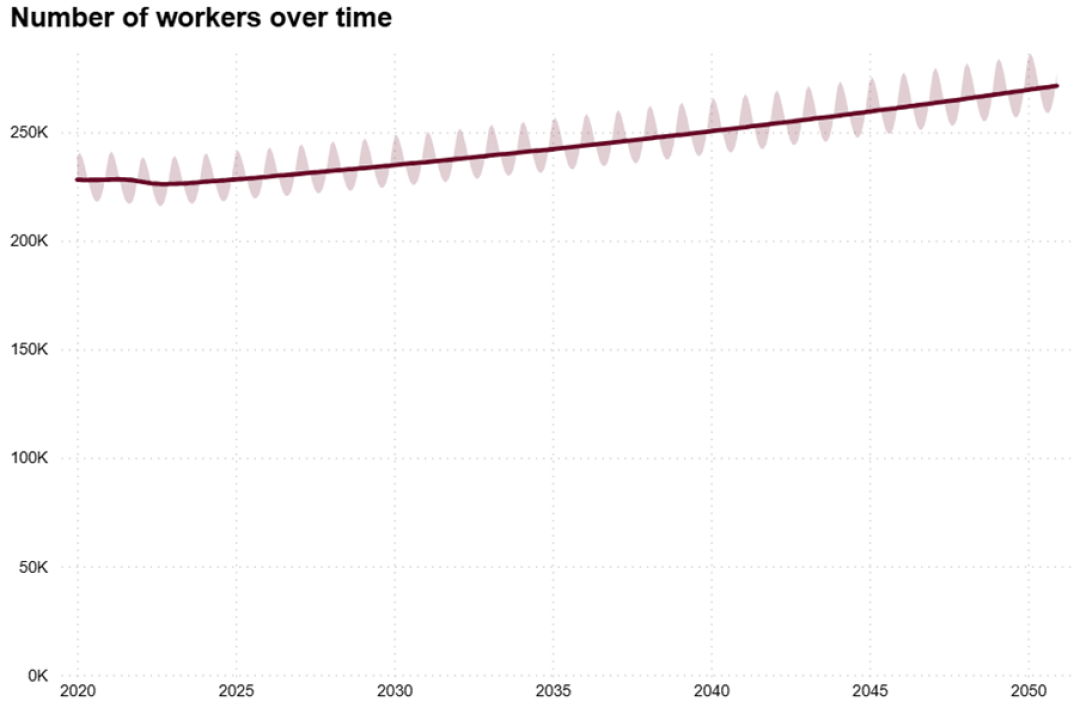
But the growth is not evenly distributed and will be driven by higher role level jobs
There is a consistent trend across all of our industries that the strongest growth in the workforce comes from the higher role level jobs. ‘Managed’ and entry-level roles show significantly less growth and in some industries are flat or shrinking.
From a vocational education perspective, this points to a need for the sector to consider how it will build the pipeline of skills to equip the growth in these higher-level roles.

Enrolments in on-job training won’t match the growth in the workforce
In this scenario, we see that whilst in work-based learning enrolments start to recover – it doesn’t match the level of growth in the workforce over the same period.
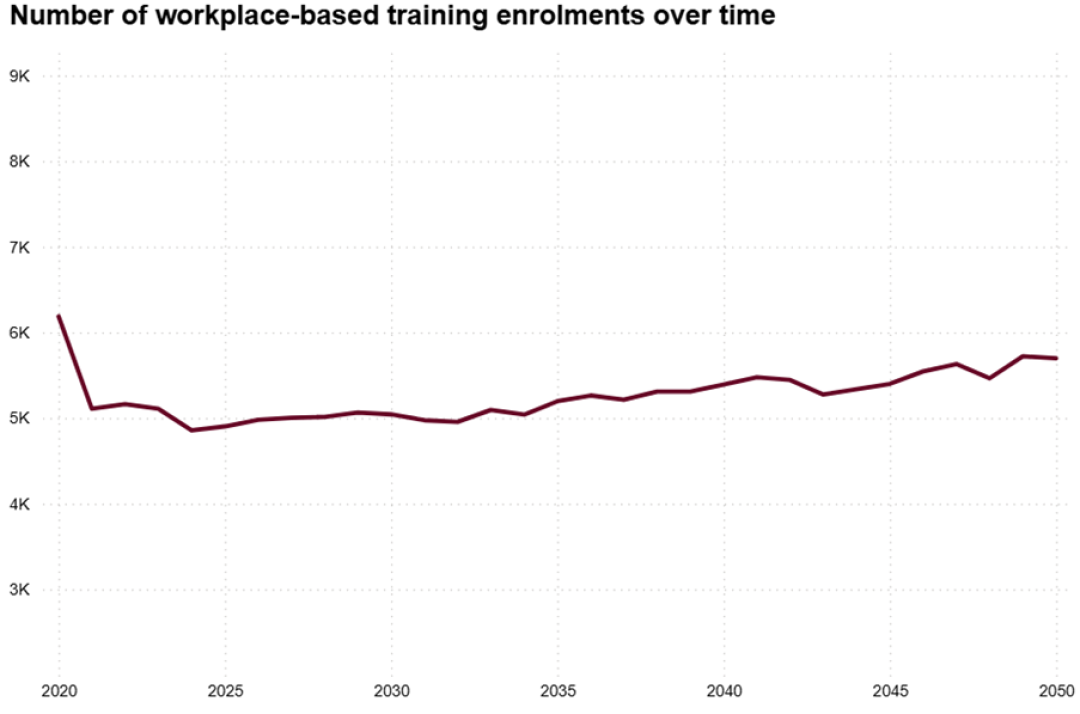
The overall levels of relevant qualifications in the workforce will fall
With training levels not keeping up with workforce growth and turnover of trained staff within the workforce, the levels of staff in the workforce with a relevant qualification are forecast to decrease over time.
This is not uniform across all our industries. For example, we see much steeper rates of decline in Dairy where the industry is now experiencing sharp drops in the levels of qualifications from a period where training was more widespread. Forestry is forecast to retain relatively stable levels of qualifications, whilst industries such as Fruit have relatively low levels of relevant qualification that there isn’t much further they can fall.
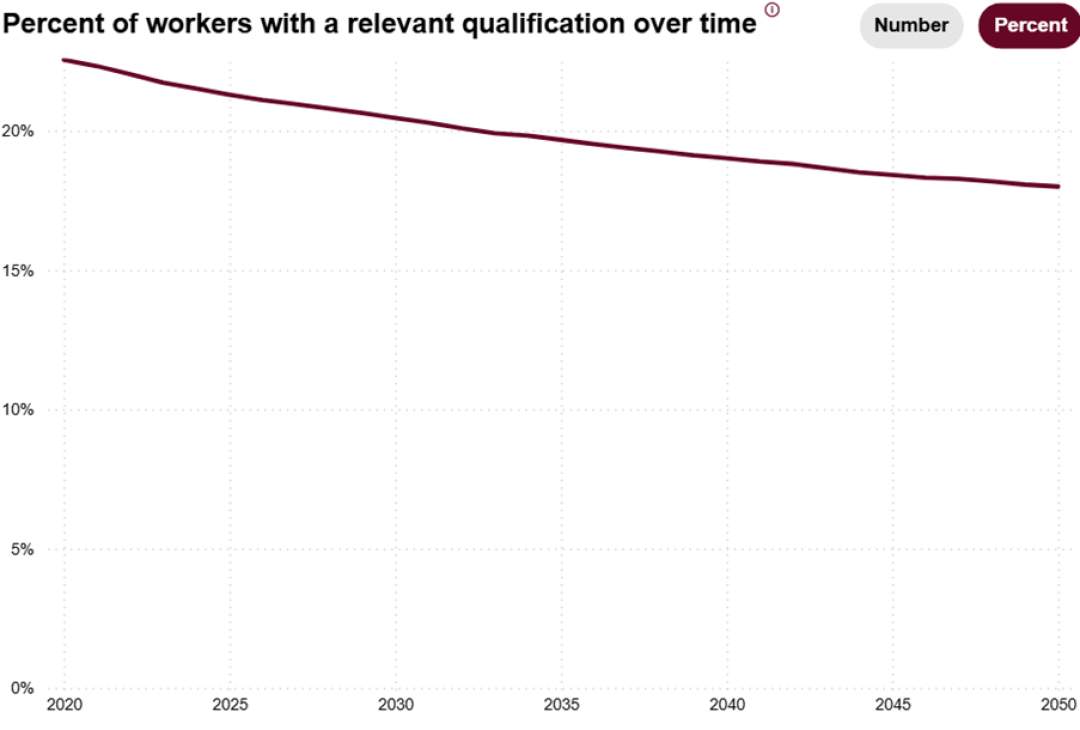
What do comparisons between scenarios show us?
The Skills Forecasting tool also allows users to compare results between different scenarios. This gives the sector the ability to quantify the difference that different goals or interventions in vocational education might have.
We’ve modelled a scenario based on what might happen if recent trends in work-based training continue – ‘Ongoing Training Decline – Expected’.
When comparing this scenario to our ‘Business as Usual' scenario we see:
The gap in the number of enrolments in work-based training grows over time
If we look at what is likely to happen to enrolments in work-based training, the numbers have been declining over recent years. Projecting this forward and comparing enrolments with our ‘Business as Usual’ scenario, we see a gap opening up in the number of likely enrolments.
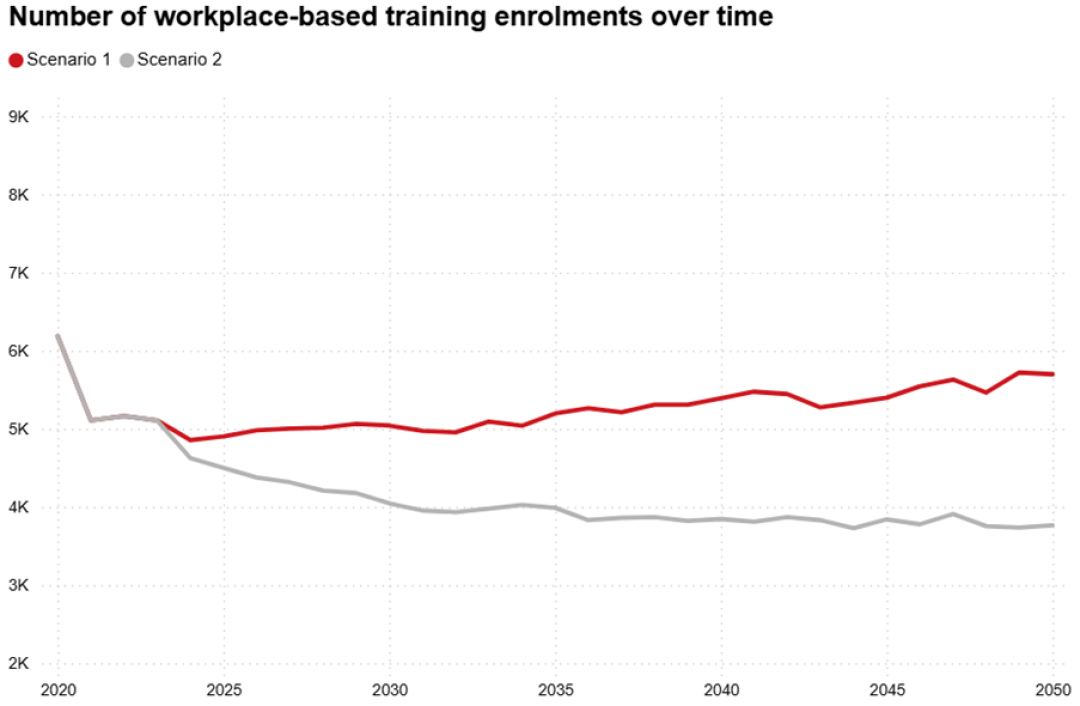
The overall qualification levels in the workforce fall even further
Under our ‘Ongoing Training Decline – Expected’ scenario we see that the overall proportion of the workforce with relevant qualifications is expected to fall even further than our ‘Business as Usual’ scenario.
The food and fibre sector already has a lower level of qualification than many comparable sectors. Under both of these scenarios – the situation is expected to get worse.
What our modelling shows also, is that it is hard to change the trajectory of decline and that positive interventions can take years to alter the profile of the workforce. If the sector wants to have a well-qualified and highly-skilled workforce, it needs both a significant change in approach to training and for this to be consistently applied over the longer term.
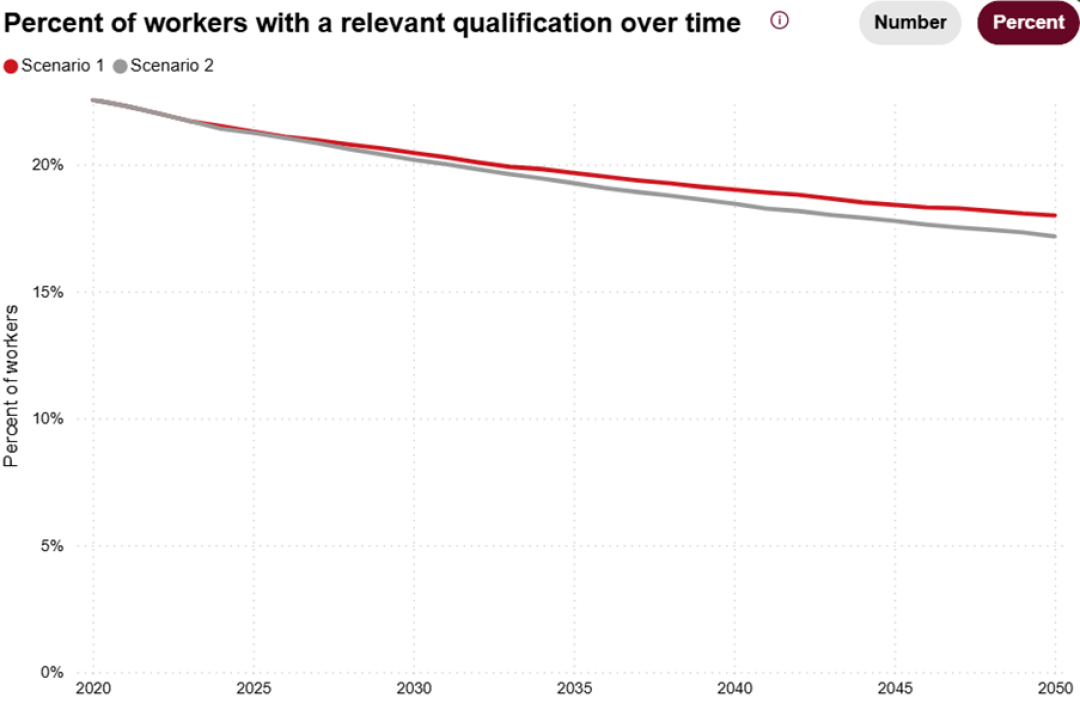
What next for Skills Forecasting?
This is our initial public release of the model. We have deliberately released it as a ‘beta’ version because we want the sector to help us grow and improve the model.
We have been working with industry and already have a lot of positive feedback on how we can improve the model, the dashboards and new scenarios that they would like to explore.
These include aspects such as:
- What workforce and skills might be needed to double exports?
- What might the workforce look like for different ethnicities?
- If we were to deliver more training as smaller chunks of learning / micro-credentials – what would that mean for the qualification levels in the workforce?
- Specific industry updates to the original MPI/NZIER forecasts to bring them up to date.
- Expanding our training model to capture ‘provider-based’ training and improving our estimates of workers with ‘relevant’ qualifications.
We will be progressively working on these and releasing new iterations and insights as we go.
If you would like to be part of this work, or have any feedback or suggestions for new scenarios, please get in touch with the team via info@mukatangata.nz
Footnotes
1. This scenario is set up so that the likelihood of anyone in a particular role (e.g. a Dairy Herd Manger) taking up training is held constant for that particular role based on their current propensities to undertake training.